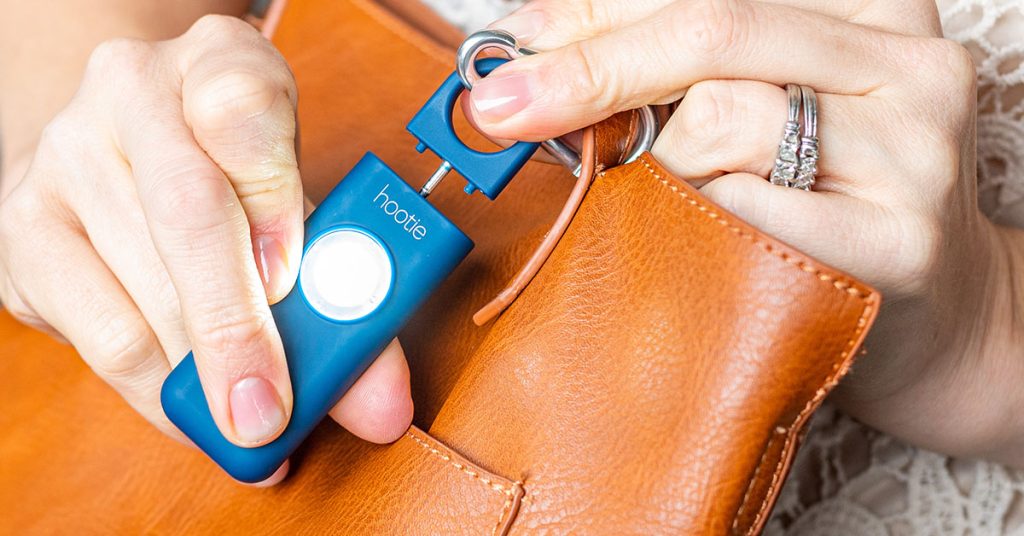
It takes just seven seconds for a criminal to identify their next target. In that incredibly short span of time, they quickly analyze your body language and surrounding environment to determine if you’re a viable victim.
Police officers, investigators, and FBI agents have studied criminal patterns for years in an effort to educate the public and ward off potential attacks. We’ve taken the subconscious habits that make people look like easy targets and detailed them below in an effort to spread awareness and reduce crimes ranging from theft to abduction.
1. Walk with Confidence
Your walk says a lot about your confidence and disposition, with a strong and forceful walk conveying that you’re in charge and dominant, while a slow and meek walk demonstrates vulnerability. When walking outdoors, especially at night, remember the STAAR rule:
- Stride: Take forceful steps with a stride that is neither too short or too long
- Tall: Walk with your shoulders back and chin up
- Arms: Allow your arms to bend naturally at the elbow and swing them as you walk
- Awareness: Be aware of your surroundings, taking note of people and things that seem unusual
- Relax: Maintain a state of confident relaxation, staying calm and collected
2. Keep Valuable Possessions Close
Carrying a bag low by the hand or a purse hanging from your shoulder by a long strap are both easy to grab. It’s common for a thief to seek people carrying possessions in this manner and grab the bag or purse as they run past.
It’s okay to use a shoulder strap for a larger bag, but position the bag itself in front of your chest and use your opposite arm to protect it. If you use a purse with a long strap, wear it as a crossbody bag to avoid it being snatched.
Regardless of what you’re carrying, never fight back if a thief attempts to take it. Deactivating credit cards and replacing possessions is far easier than recovering from injuries that may result from a physical altercation.
3. Park Under Lighting
If you know you’re leaving work, a store, a friend’s house, the movie theater or anywhere else after dark, find a parking spot under a street lamp or parking lot light.
Assailants are far less likely to strike when their crime can be easily witnessed by others, therefore they seek people in dimly lit or dark places.
Also, lock your doors when away from your car and park in close proximity to other vehicles versus remote spots when you’ll be walking to your car alone.

4. Carry a Personal Safety Alarm
A personal safety device can not only ward off an attack, but the mere presence of one could be enough to deter an assailant. Consider carrying a device such as Hootie on your purse strap or keychain — anywhere it’s quickly accessible — which emits a piercing alarm and flashes a strobe light when activated. The 130-decibel alarm quickly attracts attention while the blinding strobe light distracts the assailant, with the combination of the two sending them running.
5. Stay Off Your Cell Phone
It’s extremely common these days to see people walking down the sidewalk, making their way to their car, or even crossing the street while staring at their smartphone.
It’s become commonplace to check email, respond to text messages, and even scroll through social media while walking, with the occasional glance up to see where they’re going. This tendency has made it exponentially easier for assailants to strike, as their presence is unknown and their target is distracted.
Keep your eyes up and stay off your phone while walking, and keep earbuds and AirPods out of your ears so you can hear anyone approaching from behind.
6. Be Aware of Your Surroundings
Regardless of your environment or time of day, you should always be aware of your surroundings. As you walk in a park, along a sidewalk, or to your car in a parking lot, scan the entire area for people and take note of any strange behaviors or people watching you.
An individual on high-alert who is actively surveilling the immediate area is far more likely to anticipate an attack over someone who is staring at their smartphone or the ground. They’re also less likely to be attacked if the attacker knows they’ve been spotted by their potential target. Don’t hesitate to make eye contact with a suspicious individual as a way of indirectly communicating that you’re watching.
In addition, be aware of the proximity of other vehicles when getting into your car. If a parking lot is fairly empty, but a vehicle has parked directly next to your driver’s side door, proceed with extreme caution. This is a common practice used in human trafficking.
Conclusion
The general rule of thumb when navigating the world, especially when you’re alone, is to remain vigilant at all times. While it’s easy to assume you won’t become part of the statistics, the fact of the matter is that everyone is a potential victim if they’re not careful. Walking with confidence, being alert, and carrying a personal safety alarm could prevent being victimized as you navigate your daily routine.
